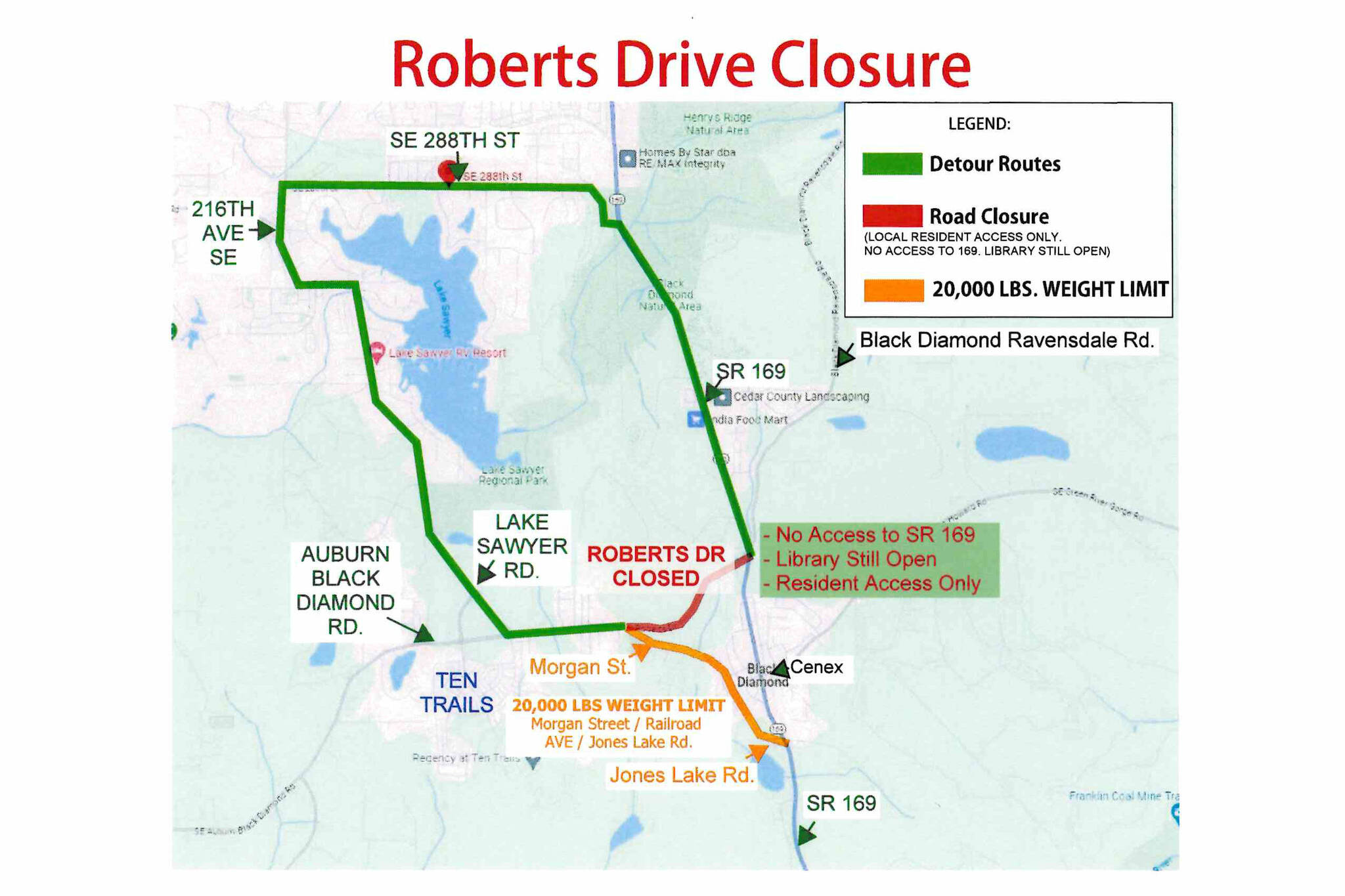Roberts Drive commuters are going to need to reconsider their route for the next half a year.
Starting May 6, the well-traveled road will be closed just at the state Route 169 intersections, cutting off access to highway for six months due to roundabout construction. However, signs will be put up at Morgan Street in order to warn drivers — and especially large trucks — that the intersection is closed.
This is just one more step in the two-and-a-half-year construction project that started in the fall of 2023 and will finish with two one-lane roundabouts: one at the aforementioned SR 169 and Roberts Drive intersection, and the second at the Pipeline Road intersection just further north.
The $20 million project is being covered by the housing developer Ten Trails as part of its master plan development with the city, which requires the company to enact various improvements around the city as more people move into the development.
The Roberts Drive closure — which is partly starting now in order to reduce the impact on the school year — is the only expected full closure while workers are on the road until around February 2026, though the highway may go down to one lane only at night.
Suggested detours include SE 288th Street to 216h Avenue SE to Lake Sawyer Road, or Jones Lake Road to Morgan Street.
Trucks weighing more than 20,000 pounds will be restricted from using the Jones Lake Road route.
PROJECT OVERVIEW
The Roberts Drive closure is part of Phase 2 of the whole project, as this is when the west end of this roundabout is being built; work on the east end will be tackled later this year as Phase 3.
The first phase was creating a stormwater vault underneath the highway, just north of the Roberts Drive intersection.
Phase 4 will be work on the highway between the two roundabouts, and Phases 5 and 6 will be constructing the Pipeline Road roundabout.
The roundabouts are expected to impact drivers specifically coming off of or onto Black Diamond-Ravensdale Road, as part of the construction will turn that intersection into a right-turn entrance only. This will mean drivers coming south on SR 169 will have to pass through both roundabouts and turn around at the Roberts Drive roundabout to access the road; alternatively, those coming off Black Diamond-Ravensdale Road and wanting to head south will first have to go north and turn around at the Pipeline Road intersection.
The project has been heavily criticized by some locals who have questioned why the city and the Washington State Department of Transportation didn’t put the second roundabout at the Black Diamond-Ravensdale Road intersection.
The answer lies in a state fish culvert project which will begin right after the roundabouts are complete.
WSDOT FISH CULVERT
After the roundabouts are finished, WSDOT is stepping in to construct two fish culverts under SR 169 — one at Black Diamond-Ravensdale Road (Ginder Creek) and the other under SR 169 at Jones Lake (Rock Creek), which is the body of water located to the west just outside the city’s southern limits.
(The Ginder Creek culvert is why the city and WSDOT could not construct a roundabout at that intersection.)
These projects will continue to affect SR 169 drivers until about 2029.
According to WSDOT Communications Manager Eric Zackula, the project is not yet fully designed, and will be completed once the state awards the project to a contractor; bidding for the project began in January, and a contractor is expected to be announced in July.
A construction timeline is also not complete, as a contractor can choose to begin working on SR 169 or SR 509 (which is also getting a new culvert) simultaneously or separately. However, Zackula said the work on Rock Creek has to be complete by December 2027.
Work on Ginder Creek can’t start until the roundabout project is complete.
Finally, traffic impacts are also unknown, but Zackula said WSDOT has “an eye” on commuters and is giving potential contractors wide berth to do their work in a way that could affect traffic less.


